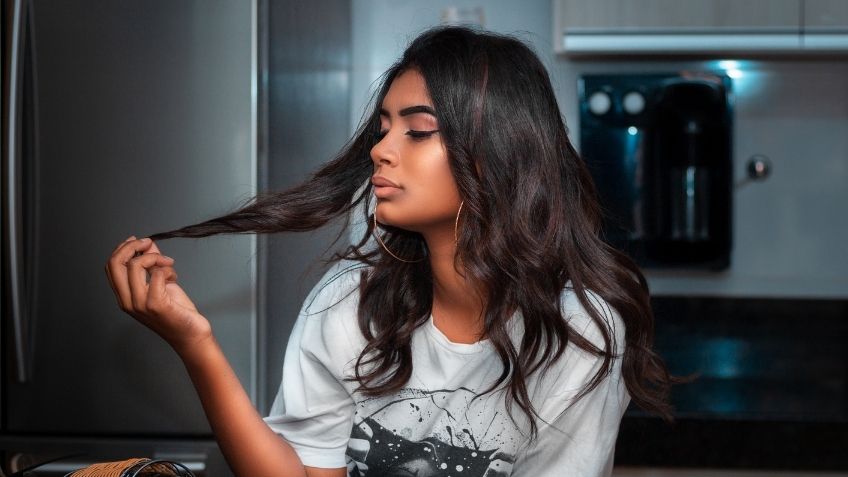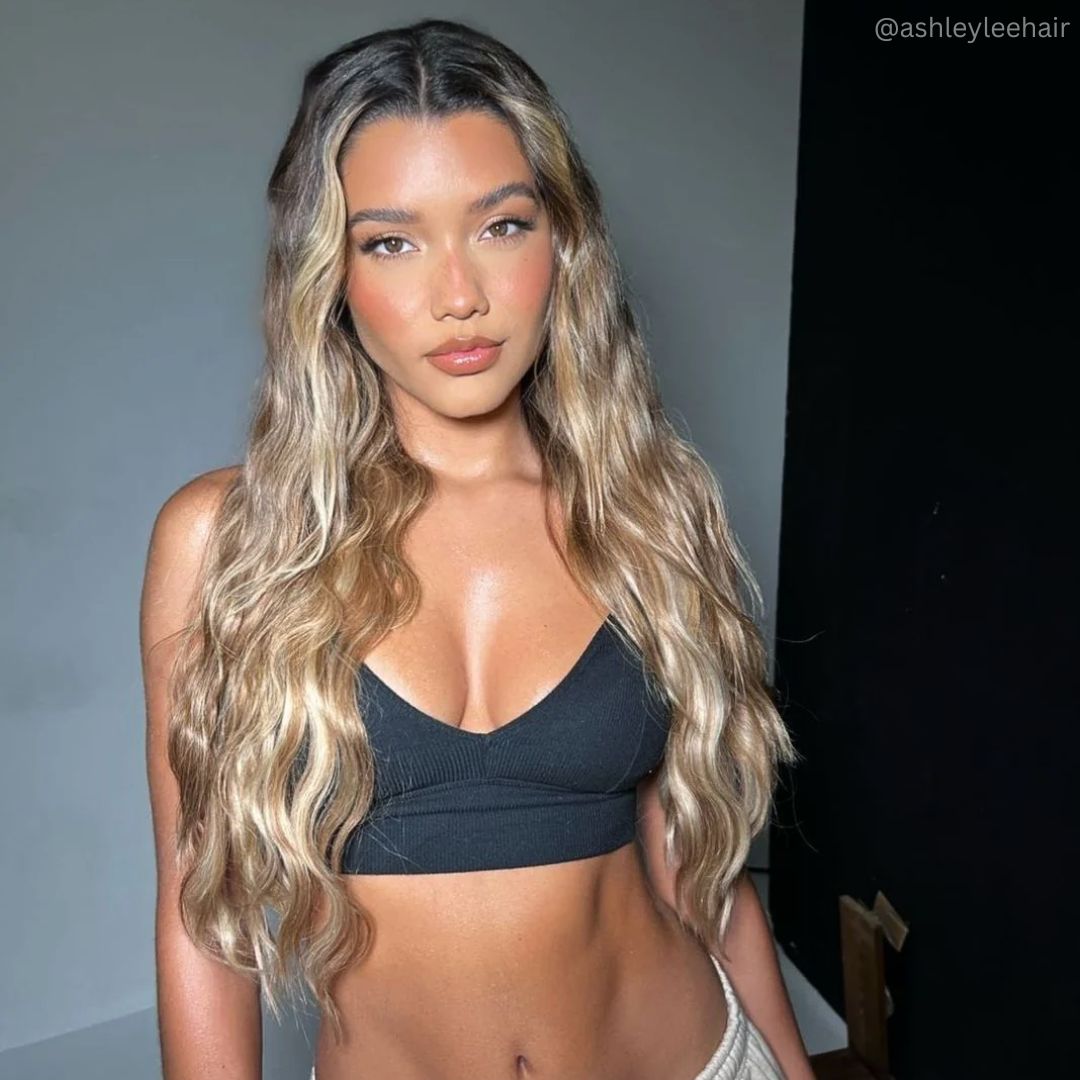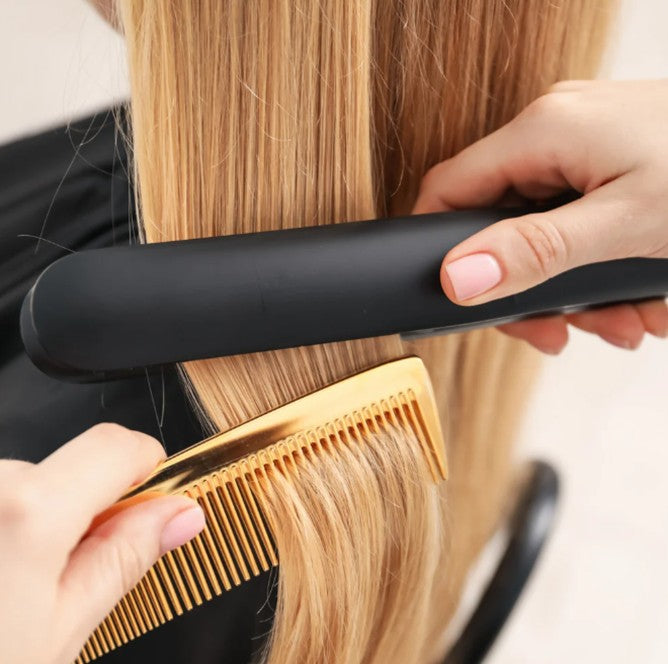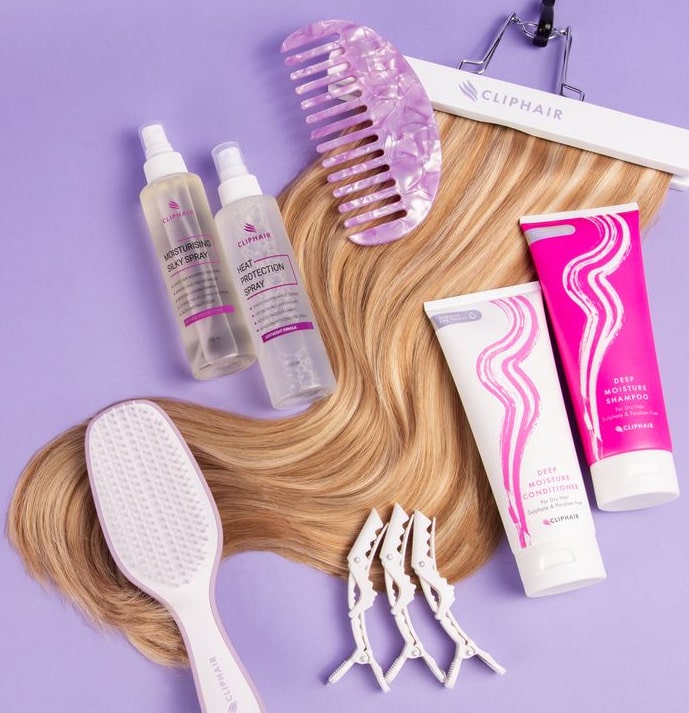Hair Loss 101: How To Use Hair Extensions With Hair Loss Like A Boss
by BRENDA L. / MAR 1, 2022

Reading Time: 6 Minutes
Index
Are you suffering from thinning hair or hair loss? Don’t worry: you’re not alone. Hair loss and thinning hair are a surprisingly common problem amongst people of any age, background and ethnicity - and the causes behind them can vary. I understand how traumatic hair loss can be, and how scary the whole process feels. But don’t worry – whilst you deal with it from a medical point of view with the help of your trichologist, there’s a few tricks you can play to keep your mane looking full and healthy.

Can I Use Hair Extensions For Hair Loss? (back to index)
Hair extensions for hair loss in women? Hell yeah! Clip-ins and semi-permanent hair extensions are a common, easy solution to give your mane that extra “oomph” whilst it recovers from telogen effluvium or any other condition that is currently affecting your scalp with hair loss and hair thinning. The best options would be clip-in hair extensions and tape-in hair extensions, as they are the least damaging types and don’t pull on your scalp as much as permanent solutions. But what is hair loss exactly, what causes it, and how can you fight it? Let’s have a look more in depth.

What Are The Reasons For Hair Loss? (back to index)
Every strand of hair on your head has a lifespan of its own, and it cycles between two and five years, divided in three major phases that hair follicles go through: active growth, transition, and rest. As I previously mentioned, hair loss and thinning can be caused by many factors including: trichotillomania (compulsive hair pulling), chemotherapy, radiotherapy, alopecia and Telogen Effluvium (a temporary form of hair loss as a side effect of childbirth, fever, severe infection, major surgery or illness, certain medications, hormone changes, chemotherapy, psychological stress and radical, traumatic dieting).

How To Prevent Hair Loss (back to index)
If you’ve been playing around with your hair for long enough, then you have probably noticed that your hair strands are fairly flexible (when in good shape). This doesn’t mean that pulling your hair, twisting it and letting it undergo mechanical stress on a daily won’t affect it! Research shows that your hair can only be stretched so much before becoming permanently damaged. Certain hairstyles like cornrows, tight braids, and tight ponytails can pull your hair away from your scalp and loosen the bond between your hair and scalp over time if worn too often and for extended periods of time.
If you’re concerned about hair loss, avoiding scalp bleach, perms and relaxers is recommended.

How To Stop Hair Loss (back to index)
Hair loss in women is typically caused by genetic female pattern hair loss, androgenetic alopecia, thyroid disease, aging, and/or other hormonal conditions. About one-third of women will experience hair loss in their lifetime; if you are losing your hair, the first thing to do is to speak to your doctor.
On top of the causes I just mentioned, nutritional deficiencies can cause hair loss too. Iron, zinc, niacin, selenium, vitamin D, and vitamin B-12 supplements can give that kick to your system and help your body produce hair that’s strong and healthy. If you’re looking to take any supplements, remember to speak with your doctor first (you will need a correct diagnosis to target the root cause behind your hair loss problem anyways) and always make sure to buy them from a trusted source.
Another option to try at home if you’re a fan of natural remedies and DIY would be essential oils! What’s better than implementing natural fragrances in your beauty routine? Essential oils are extracts of powerful botanical ingredients. Most of the times, it is recommended to mix them in with a carrier oil, like jojoba and almond oil, to create a treatment to stimulate hair growth whilst being kind to your skin. Some essential oils might make your hair grow stronger. Research on these essential oils is mostly anecdotal, but every day we are learning more and more about how they work. Essential oils for hair growth include peppermint, lavender, ginseng and Chinese hibiscus.

What Are Some Early Signs Of Hair Loss? (back to index)
Hair loss can appear in many different ways, depending on what's causing it. If you suffer from hair loss, you may start noticing it as a gradual process occurring to your scalp or whole body, but it can also be a sudden shock you wake up to or find out in the shower during a hair wash day.
Early signs and symptoms of hair loss may include:
Gradual thinning on top of head: whilst this generically shows up in the form of receding hairline in men, women typically experience a gradual broadening of the part in their hair.
Circular or patchy bald spots: some people lose hair in circular or patchy bald spots on the scalp, beard or eyebrows. Your skin may become itchy or painful before the hair falls out.
Sudden loosening of hair: this is a bit rarer, but not impossible at all. You may have heard stories about this (similar to people losing pigmentation in their hair for similar reasons) and no, it isn’t just a myth! Physical or emotional shock can cause hair to loosen and fall. Handfuls of hair may come out when combing or washing your hair or even after gentle tugging. This type of hair loss usually causes overall hair thinning but is only temporary.
Full-body hair loss: some conditions and medical treatments, such as chemotherapy for cancer, can result in the loss of hair all over your body. The hair usually grows back.

Covid And Hair Loss (back to index)
It’s 2022, and Covid is still here. If you have recovered from Covid and its nasty symptoms, you may have noticed that your mane has been showing the signs ever since.
The American Academy Of Dermatology Association (AAD) states on their website: “Temporary hair loss is normal after a fever or illness.”
As fever is a common symptom of COVID-19, many people see noticeable hair loss and link it to the Corona virus disease itself. While it’s easy to mistake this for hair loss, it’s actually to be considered hair shedding (telogen effluvium), and it happens when more hairs than normal enter the shedding (telogen) phase of the hair growth lifecycle at the same time. A fever or illness can force more hairs into the shedding phase. After recovering from the symptoms of Covid-19, hair shedding may be noticeable after two to three months from when you experienced fever, and it can last up to six to nine months.

Conclusion: (back to index)
Whilst I don’t really have a bunch of useful stats and exact data at hand, if there’s one thing I can bet on is that no one likes the idea of losing their hair. And whilst in some cases it’s something you cannot permanently stop without solutions like surgery and transplants, if you’re experiencing hair thinning and need to spice up your hair game in the meantime, have a look at our range of hair extensions and get color-matched for free by our experts. And whatever your hair is experiencing right now, you have all the right to look gorgeous and feel confident whilst facing it!

Looking for flawless, salon-worthy hair without breaking the bank? At Cliphair, we’ve got you covered with luxurious clip in hair extensions for quick transformations and permanent hair extensions for long-lasting glam. Extensions require special care and maintenance to preserve their quality, which is why we have all the top-notch hydrating haircare products needed to keep your style on point.
Need the perfect shade? Browse our full range of human hair extensions in over 70 rich, silky shades or check out our FREE Express Color Match Service to ensure a seamless blend every time.






